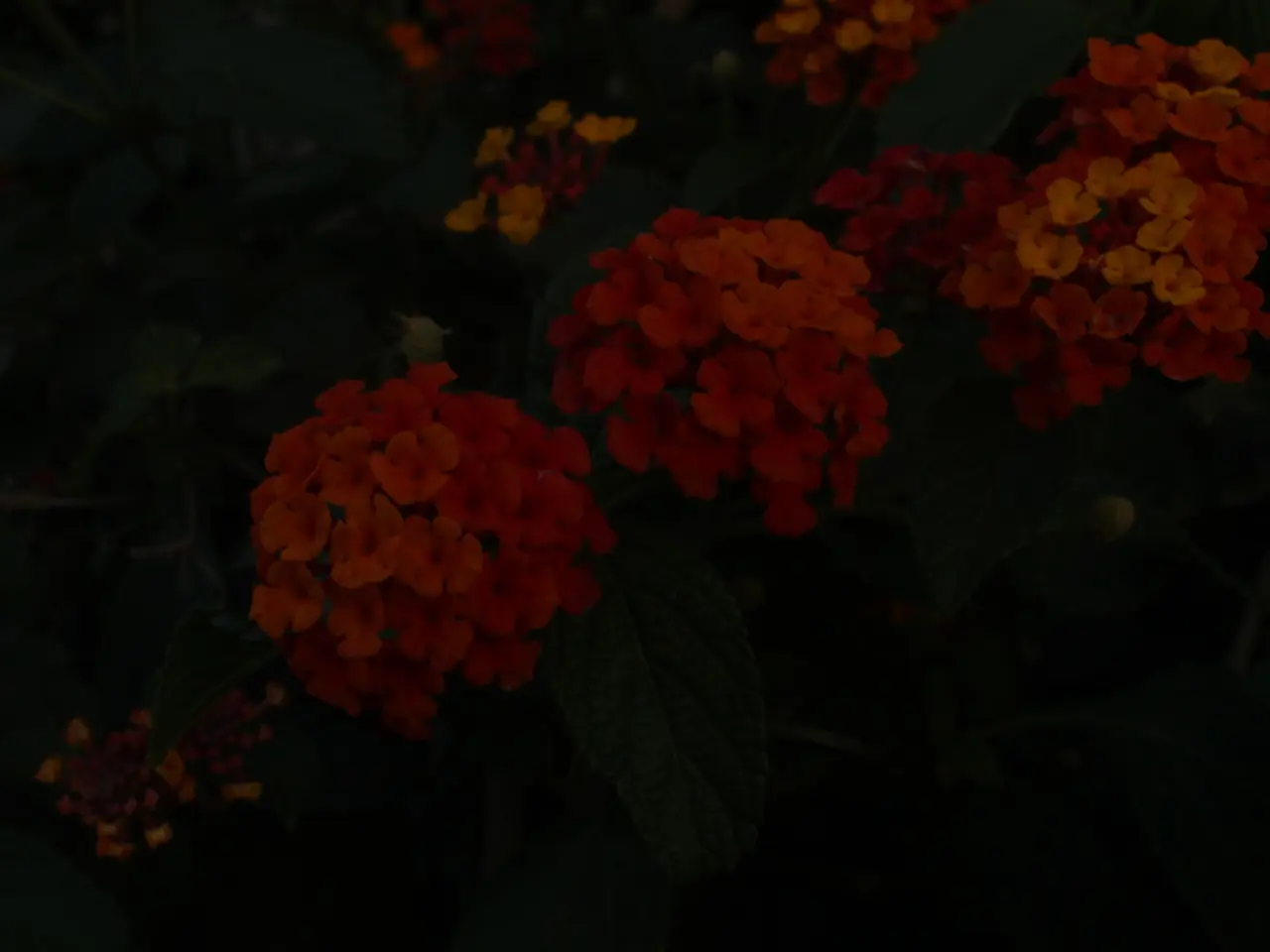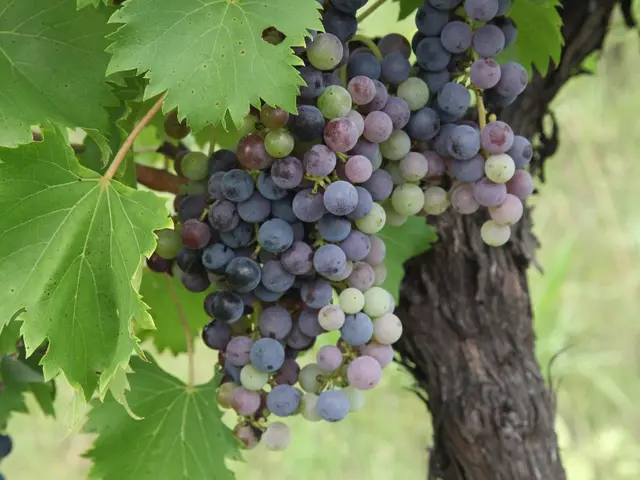Practical Advice for Crafting a Blossoming Flower Bed
Creating a flourishing flower garden that thrives in your specific climate is achievable with the right plant choices. Here's a practical guide to help you choose the best flowering plants for your garden based on local climate, soil condition, sunlight exposure, and drainage.
1. Local Climate (Hardiness Zones and Temperature)
Northern climates often have cooler temperatures and shorter growing seasons, so choose cold-hardy plants that can tolerate frost and lower temperatures. Plants hardy in zones 3-6 are usually suitable. Southern climates tend to be warmer with longer growing seasons and sometimes dry conditions, so select heat- and drought-tolerant plants. For example, desert plants thrive here. Western exposures can experience more temperature fluctuations due to afternoon sun and hot walls; thus, choose plants that tolerate heat and variable conditions.
Examples: - Russian Sage (Perovskia atriplicifolia) thrives in zones 5-9, tolerant of heat and drought, making it good for warmer or more temperate zones with well-drained soil[3]. - Moonflower acts as a perennial in subtropical/warm zones (10-11) and an annual in cooler zones[1]. - Native plants such as Desert Mallow suit hot, dry southern climates well due to drought tolerance[5].
2. Soil Conditions
Test your soil pH and texture (sandy, loamy, clay) because plants have preferences; for instance, some favor acidic soil, others alkaline. Assess soil drainage: poorly drained, compacted soil may require plants tolerant of wet roots or soil improvement. Soil near structures might be compacted or alkaline, requiring specific species that adapt.
Example: - Weigela prefers moist but well-drained soil, suitable for partial shade to full sun, hardy in zones 4-8[2]. - For dry, well-drained soils in southern/western gardens, look for drought-tolerant species like Russian Sage or native plants.
3. Sunlight Exposure
Sunlight varies by garden orientation: - Northern exposure—shadier, cooler conditions; pick shade-tolerant plants. - Southern exposure—most light throughout the day; choose sun-loving species. - Western exposure—can be hot and intense in late afternoon; opt for heat-tolerant plants. - Plants like Morning Glory require full sun to bloom well, while Wax Begonias can tolerate shade to full sun[1].
4. Drainage
Flowering plants generally prefer well-drained soil to avoid root rot. If your garden has heavy clay or poor drainage, amend soil with organic matter or select species tolerant of wetter conditions.
Practical Guidelines by Climate Zone and Exposure
| Climate/Exposure | Ideal Plant Traits | Plant Examples | |------------------|---------------------------------------------|------------------------------------------| | Northern (cooler, less sun) | Cold hardy, shade tolerant or partial sun | Weigela, 'May Night' Salvia (zones 4-9), Wax Begonias (partial sun to shade) | | Southern (hot, dry) | Heat & drought tolerant, full sun loving | Russian Sage, Desert Mallow (native), Moonflower (annual in cooler parts) | | Western (afternoon heat, hot walls) | Heat tolerant, possibly partial shade | Russian Sage, drought-tolerant shrubs, sun-adapted perennials |
Additional Tips:
- Plant after the last frost date for your area to ensure survival.
- Consider water availability: select drought-tolerant plants for dry climates or those with irrigation access.
- Some perennials bloom long and attract pollinators, adding ecological benefits (e.g., Salvia and Russian Sage)[3].
- For consistent bloom throughout summer, plant a mix of annuals and perennials suited to your region and site conditions[1].
By aligning your plant choices with local climate hardiness zones, matching soil types and drainage, and respecting sunlight exposure specific to your garden's orientation, you can establish a thriving flower garden suitable for northern, southern, or western locations.
Mixing plant heights, colors, and sizes adds movement and a meadow-like look to the garden. Small plants should be planted near the front of the flower garden. Asiatic lilies, Coreopsis, Gaura, Dianthus, and Salvia are examples of perennial plants that do well in southern gardens. Native plants are recommended for gardens as they have adjusted to the local climate. Tall plants and bushy shrubs should be placed at the back of the flower garden to avoid casting shadows.
Begin sowing seeds 4 to 6 weeks before the average last frost date. Planting low-maintenance perennial and annual plants is recommended for a blooming flower garden all season long. If using raised beds, use a well-draining potting mix that retains moisture well and add organic compost. Flowering plants bloom at different times, so keeping colors, textures, and forms in mind when planning the garden setup is important. Ornamental grasses like Muhly and Fireworks Pennisetum can add height and structure to a flower garden.
Daylilies, astible, moonbeam, Heuchera, May Night, and Phlox subulata are examples of perennial plants that do well in northern gardens. Layering blooming plants can create a garden with a naturally lush look. A soil test should be done to ensure it has the right pH for flowering plants. Proper drainage is important for perennial plants as they hate standing water. Strategic repetition can create a serene, calming setting in a flower garden.
The ideal location for a flower garden is a south-facing spot that gets at least 6 hours of sunlight. When designing a flower garden, consider starting with a good shape and combining vibrant, dynamic, and eye-catching plants. Building a flower garden can be done with a window box, a flower bed, or a few planters. Most home gardens prefer a pH of 6.5, but some plants may require acidic or alkaline soil. Shade-loving flowering plants can be grown in the deck, patio, or any north-facing spot.
- To create a beautiful home-and-garden setting, consider planting Dianthus, Dianthus plumarius 'May Night', in your northern garden, as it is cold-hardy and thrives in zones 4-9, making it suitable for shady or partially sunny areas.
- Transform your south-facing home-and-garden into a vibrant oasis by planting Asiatic lilies, Gaura, or Coreopsis, as they are drought-tolerant and sun-loving plants that will bring life to your gardens in warmer, drier climates.






